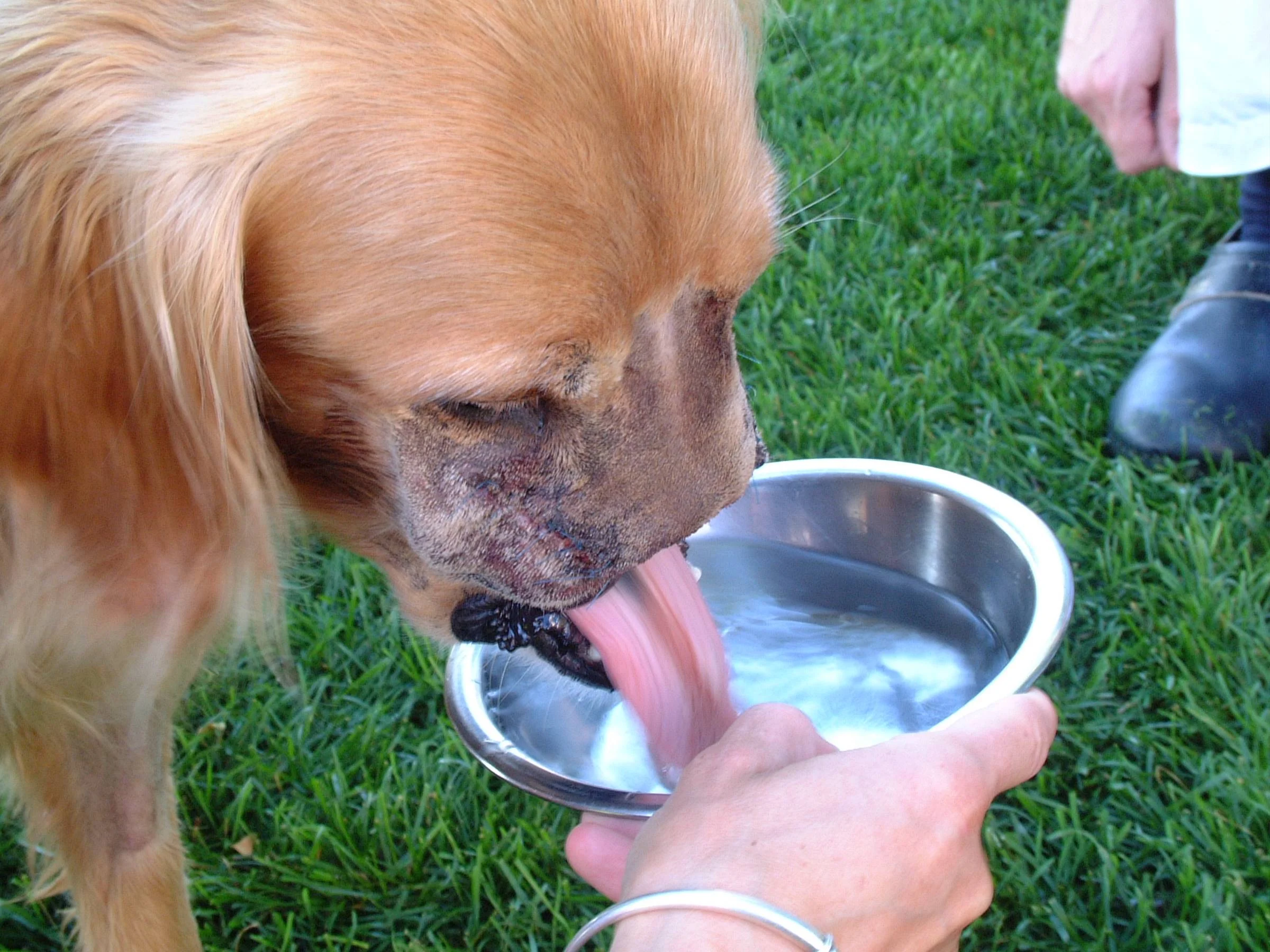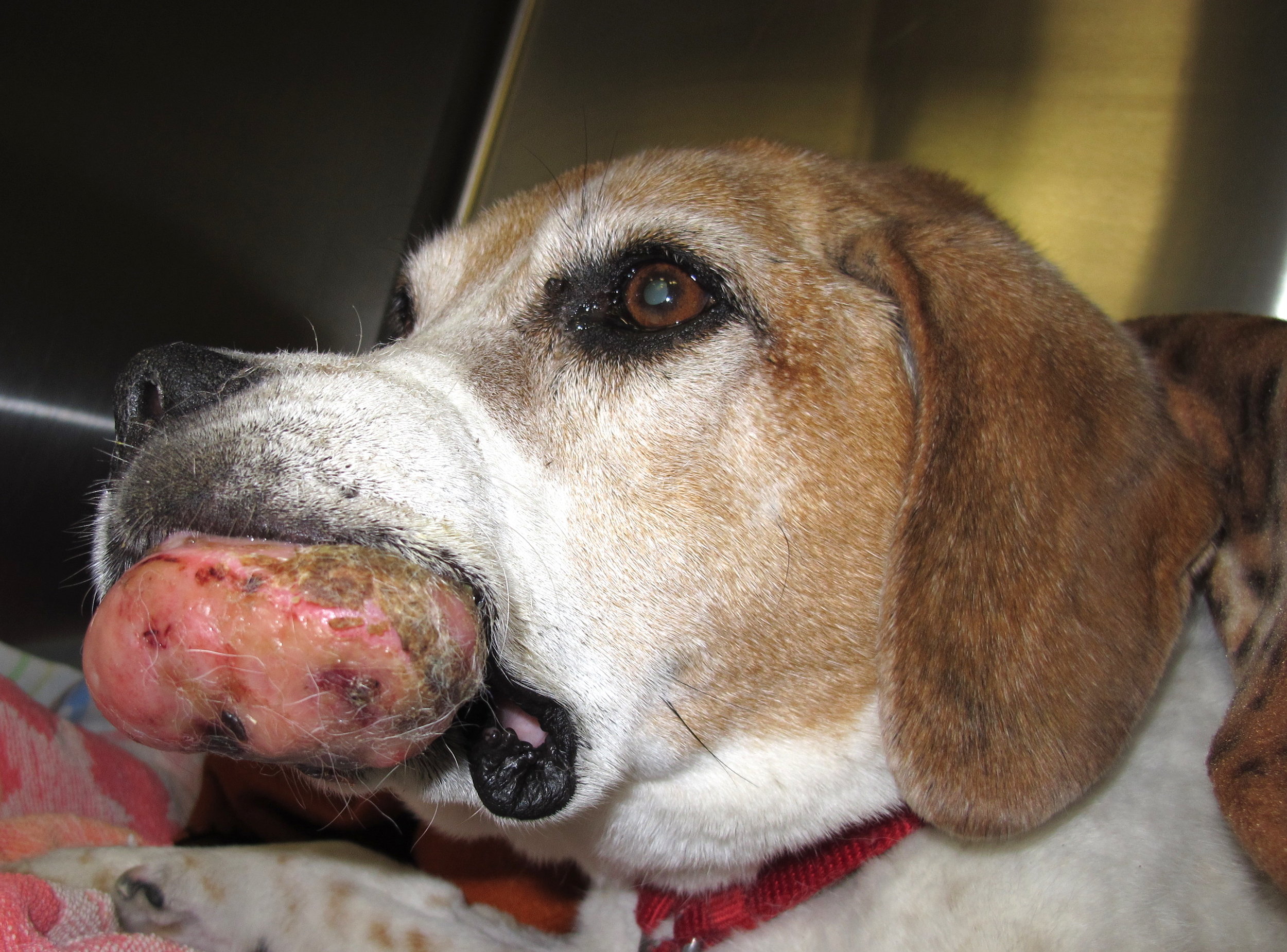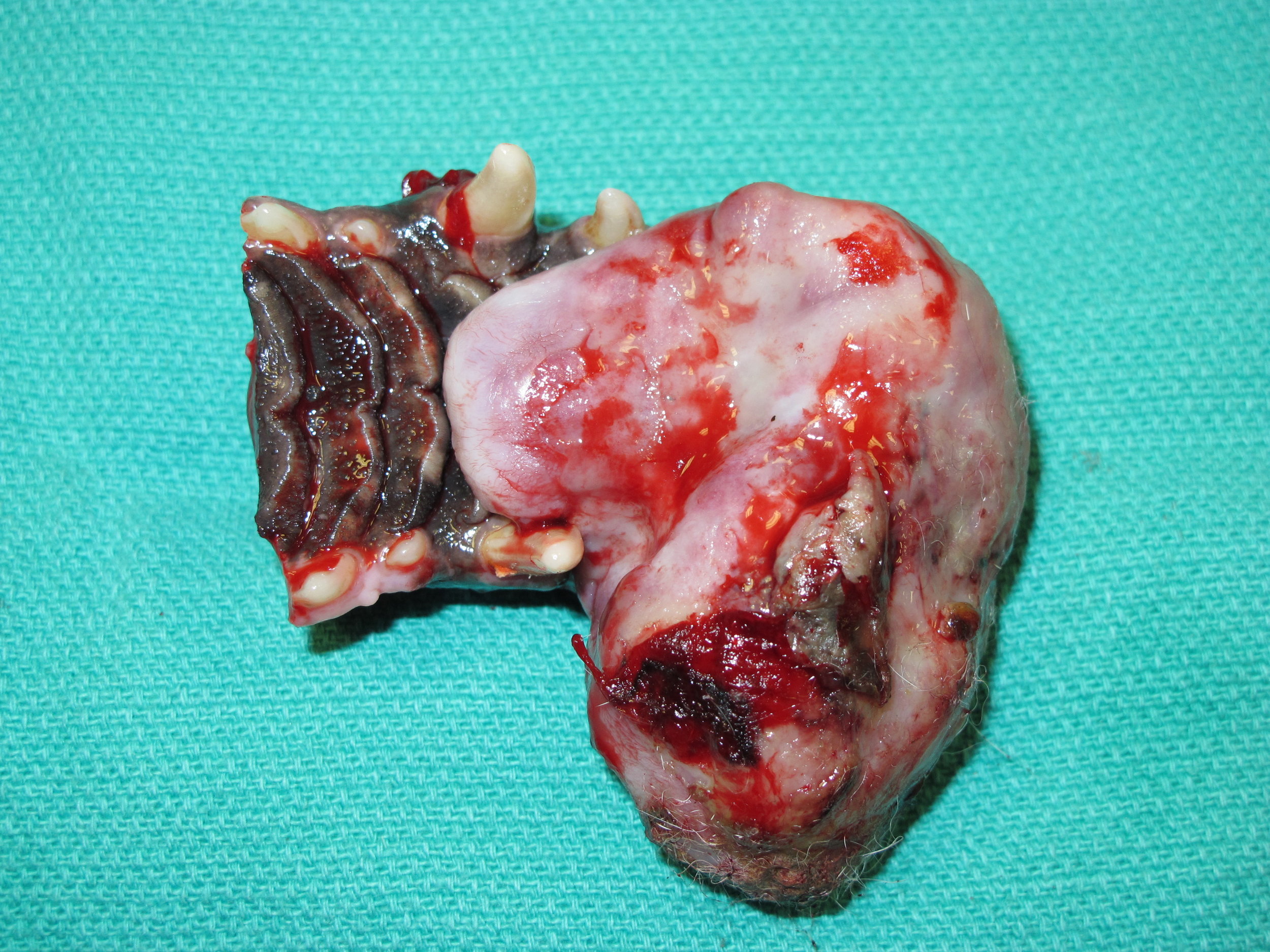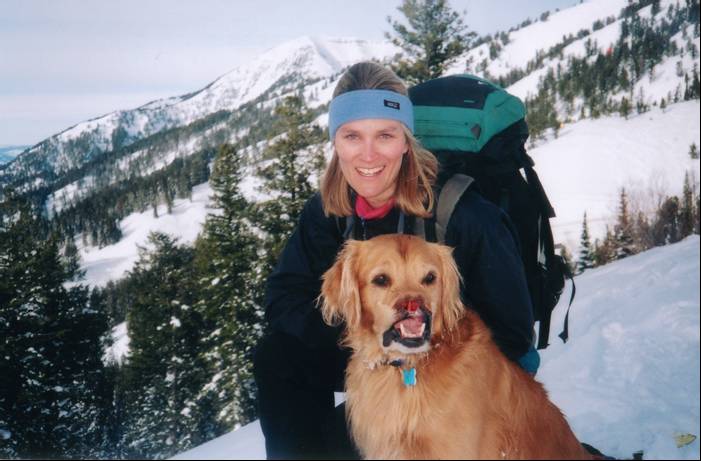BILATERAL ROSTRAL RADICAL MAXILLECTOMY
Bilateral rostral radical maxillectomy is the most aggressive maxillofacial procedure performed in cats and dogs. This procedure is indicated for extensive malignant tumors of the rostral maxilla which across the midline and extend caudally and dorsally into the nasal cavity. While the cosmetic results are challenging, the functional outcome and the oncologic outcome are often very good to excellent.
The most common complications associated with bilateral rostral radical maxillectomy include partial incisional dehiscence (29%), eating difficulties, incsional swelling, stenosis of the nasal apertures (14%), and mild but persistent nasal discharge. Eating difficulties included inappetence in one dog which required supplemental feeding via a feeding tube and two dogs who were not inappetent but required hand feeding for 3 weeks before returning to normal eating. In one clinical study of six dogs and one cat (2004), all animals were eating normally at the last followup 11-66 months after surgery, but eating and drinking were often messy. Despite the challenging cosmetic appearance, 100% of owners were satisfied following bilateral rostral radical maxillectomy.
Case 1 - Bilateral Rostral Maxillary Fibrosarcoma









1 Day Postoperative - Eating
Case 2 - Bilateral Rostral Maxillary Squamous Cell Carcinoma










Case 3 - Bilateral Rostral Maxillary Squamous Cell Carcinoma










Last updated on 6th March 2017
